For so long as I can remember, I’ve been magnetized by the farthest north. I’d spin our family’s globe and pore over the islands of northern Canada, the icy mass of Greenland, the Russian isles in the Arctic, Norway’s Spitsbergen, and so forth. I remember specifically being transfixed by the town of Resolute, Nunavut, known as Qausuittuq (though when I was looking, Nunavut had yet to be formed). I was obsessed by the question of how people lived there, in the northernmost settlement named by the map we had. What did they do? (A question many people in various elsewheres were asking of my home in rural Iowa, too, to be sure.) In my childish mind, I imagined whole lives transpiring in a moment in a landscape nearly void of trees and, somehow, always covered in snow, the horizon barely noticeable. My imagination was surely conditioned by my own experience, by a subtle sort of cultural condescension rooted in the particular kind of civil privilege I’ve been afforded my whole life. But really, curiosity was, and is, the primary driver of my interest in the deep north.
Twenty-odd years later, I’ve just crossed the Arctic Circle—Polarsirkelen på norsk—for the first time. I think often of circles, and so I think of the opening of “Circles,” my favorite of Emerson’s essays: “The eye is the first circle,” he says, “the horizon which it forms is the second; and throughout nature this primary figure is repeated without end.” Throughout the essay, Emerson works the figure of the circle into a sort of chain of reminders of the limits, the incompleteness, of our understanding. “Circles” is, to me, the essay most dedicated to the concept of humility, especially given Emerson’s notorious ego, his “overman”:
Our life is an apprenticeship to the truth, that around every circle another can be drawn; that there is no end in nature, but every end is a beginning; that there is always another dawn risen on mid-noon, and under every deep a lower deep opens.
When I crossed the Arctic Circle, I thought of Wallace Stevens’s ninth way of looking at a blackbird:
IX
When the blackbird flew out of sight,
It marked the edge
Of one of many circles.
I’ve always thought Stevens was gesturing toward Emerson in that line. Especially considering he also begins with the eye:
Among twenty snowy mountains,
The only moving thing
Was the eye of the blackbird.
Not unlike Emerson’s circular eye, I think. So I marked my own passage over one of many circles by thinking a lot about the limits of our manifold “places” in the world. The world we all build around ourselves are a sort of partially shared response to the particular place from which we emerged. I from Iowa, the people I meet in the Arctic (say, Narvik) from the Arctic (say, Narvik). Our knowledge of the world—and, I might argue, of the experience of others—is a kind of repetitive forgetting. “The man finishes his story,—” Emerson writes, “how good! how final! how it puts a new face on all things! He fills the sky. Lo! on the other side rises also a man, and draws a circle around the circle we had just pronounced the outline of the sphere.” I’ve been thinking so much about the American tendency to fear what’s outside of the “American circle,” especially watching the circus (!!) of the primary races going on, darkly entertaining as it is, and the extended bonkers joke of Trump and Carson (imagine having to try repeatedly to explain to the wide-eyed Norwegian high school students—and teachers—how those clowns are taken seriously for one second on a national stage!). In any case, lest I wander off into the thicket of political opinion, as exciting as that forest can be, I’ll just quote my benefactor, J. William Fulbright, in saying that exchanges like this “convert nations into peoples and to translate ideologies into human aspirations.” (eca.state.gov). I’d add that exchanges also turn maps into people, and, moreover, into the sort of wondrous integration of people and place that a map represents. The imaginary Arctic of my youth is, as it ever was, a living place, and now newly.
According to the trusty crew at NOAA’s SWPC (Space Weather Prediction Center), a solar storm made for a stellar (!) show of Northern Lights . . . but one only visible to those rare dwellers above the week-long clouds that hung low over Narvik, which sits at 68°N, during my stay. In any case, I got off the plane at Harstad/Narvik Lufthavn Evenes, and walked into a sharp, gusty north wind and rain (a sort of romantic entry, really), and made my way to town on the bus. A welcoming school, and a great visit, including some great discussions with teachers about classroom technology, and a wall of post-it notes full of one class’s feedback on my environmentalism presentation. Gonna remember that! Narvik, my host Fiona told me, is a relatively young town by Norwegian standards, and is built on the iron ore industry. Trains of ore cars were constantly rolling in and out of a huge industrial processing facility. It felt a lot like the Mesabi Range in Northern Minnesota—a sort of Duluth-y feel, only smaller (and, y’know, a tad farther north and a liiiittle more mountainous). My visit was, as is my wont, a walking one. I love walking towns, and though the daylight arrived and escaped with surprising speed (in fact, the sun rose 18 minutes later and set 17 minutes earlier on the day I left than the day I arrived; thus, Narvik is losing close to 40 minutes of daylight a week about now), I managed to carve out time for a good stroll up Narvikfjellet, the small mountain that rises right over the town and serves as a sort of ski paradise when there’s enough snow. Pictures below, of my wander into the clouds, where, despite the unseasonable warmth, some snow clung to the hill.
These last few weeks have been fuller even than Narvik, though, with two weeks on the west coast in Sandnes and Stavanger, Norway’s oil-town, beforehand, including a presentation on my ol’ favorite Ursula K. Le Guin at the ASANOR Conference (American Studies Assoc. of Norway). Due to the oil industry, I’ve harbored a sort of quietly bad attitude towards Stavanger (call it a Houston-prejudice), but although Stavanger is “Norway’s Houston,” my is it a pretty town! I walked and walked Stavanger (and Ryfylke, the mountainous region across the water towards the famous Lysefjord, among countless others) and made a point to spend some time at the Oil Museum, which is quite good, and, somewhat surprisingly, dedicates a lot of space and time to criticism of the nation’s dependency on oil money for many of its social privileges, both from within and without Norwegian society. I confess I was impressed (both by the critical dimension and by the technological immensity of the oil infrastructure out in the Norwegian Sea). The long stay in Stavanger was sweetened by a reunion with some of my oldest, dearest friends from Luther (it did not take us long to reach the point where we were doubled over in laughter). Nathalie, my teacher host, graciously lent me her car so I had the chance to hop the ferry (which, being a Washingtonian, threw me into a rare but minor fit of nostalgia) to Tau and on to the infamous Prekestolen (or Preikestolen, in the western dialects). Speaking of dialects, it was a healthy challenge for me to adapt my ears to Stavangersk for such a spell, all the kor‘s and kva‘s and kordan‘s where hvor‘s and hva‘s and hvordan‘s usually live. Uff!
In any case, on to the images. I’ll keep up with the panorama theme, with a few exceptions, given the timespan (and the nature of my adventures). First a few from the phone, then a couple from the camera.

This the view west over Gandsfjorden from the top of Dalsnuten, looking toward Sandnes as the sun sets. The Atlantic in the distance.
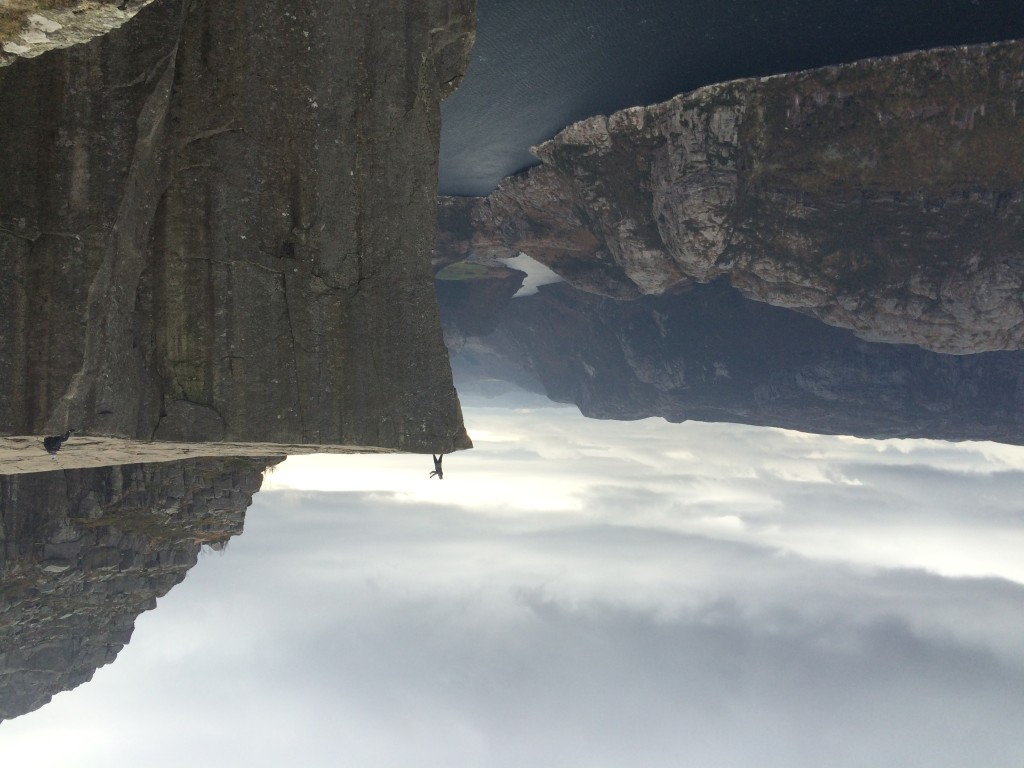
My first sight of Prekestolen. Lysefjord below. Is that man taking a selfie or doing tai chi? (Notably, the Norwegians have developed the term fjellfie, or “mountain selfie”; I admit I think it’s cute.)
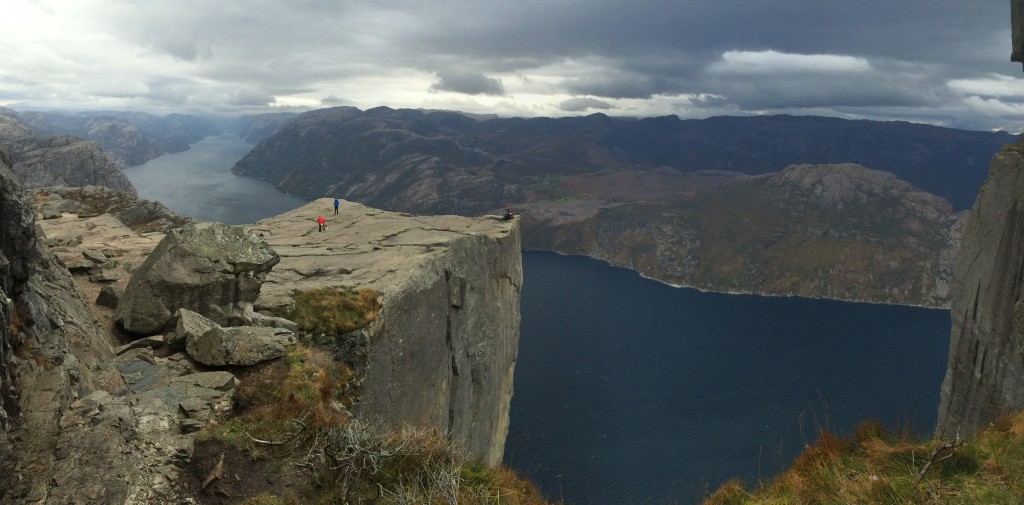
Prekestolen over Lysefjorden. October is the time to visit here, I say! Google Preikestolen and you’ll quickly see how crowded it gets in the summer. Plus, that color! Those gnarly branches!
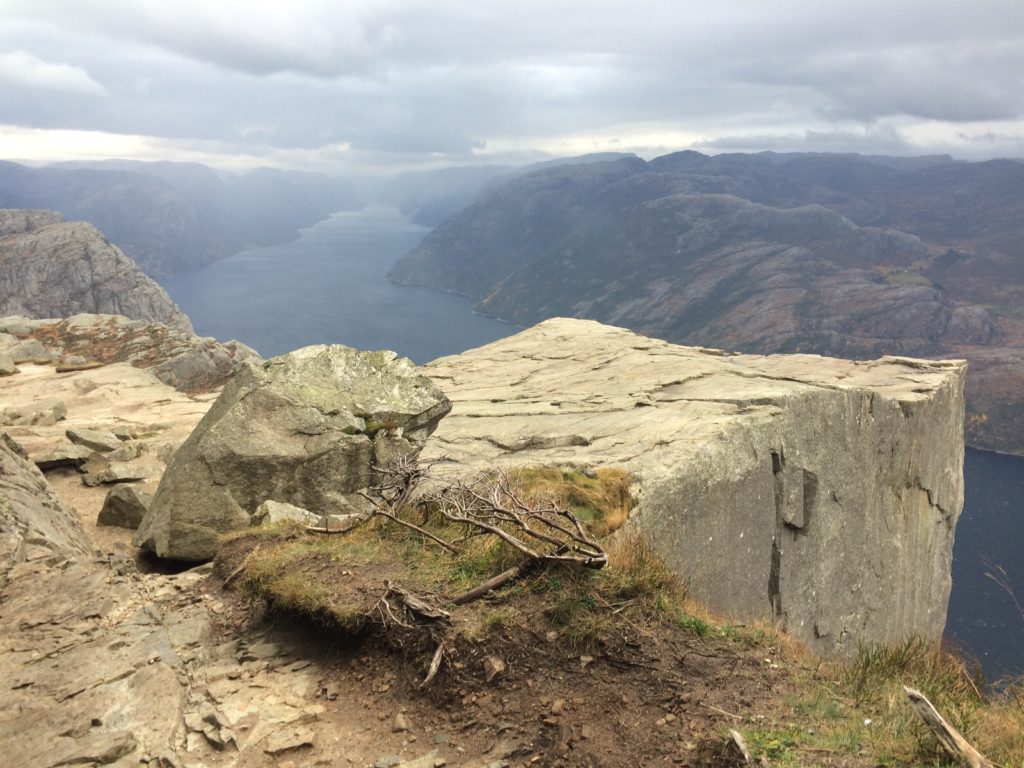
I waited and waited, and got a relatively rare image of Prekestolen sans tourists (save the one with the eye).
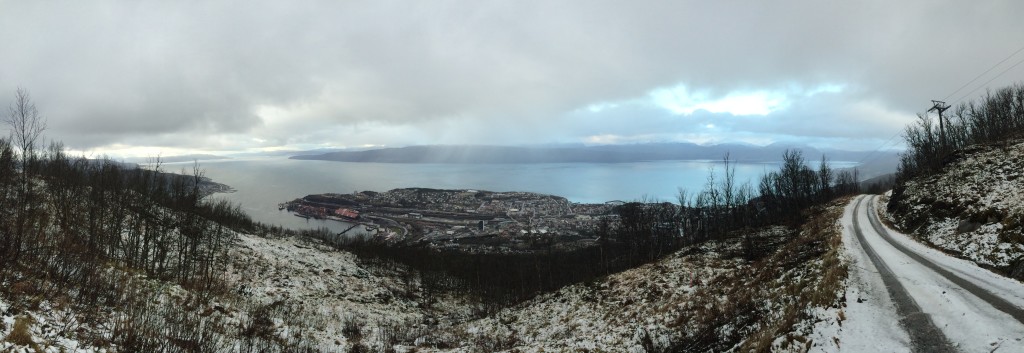
Narvik from Narvikfjellet. The dramatic mountains were here & there visible as the clouds broke up & reuned. The farthest north I’ve yet been.
These next few, from the real camera, are from my hike back down from Prekestolen. There is something about that autumnal grass, its auburn glow against the evergreens and the stark indifference of granite. It’s no wonder trolls hide here.
The Emerson text I quoted from is the Library of America edition of Essays and Lectures, ed. Joel Porte, published in 1983.
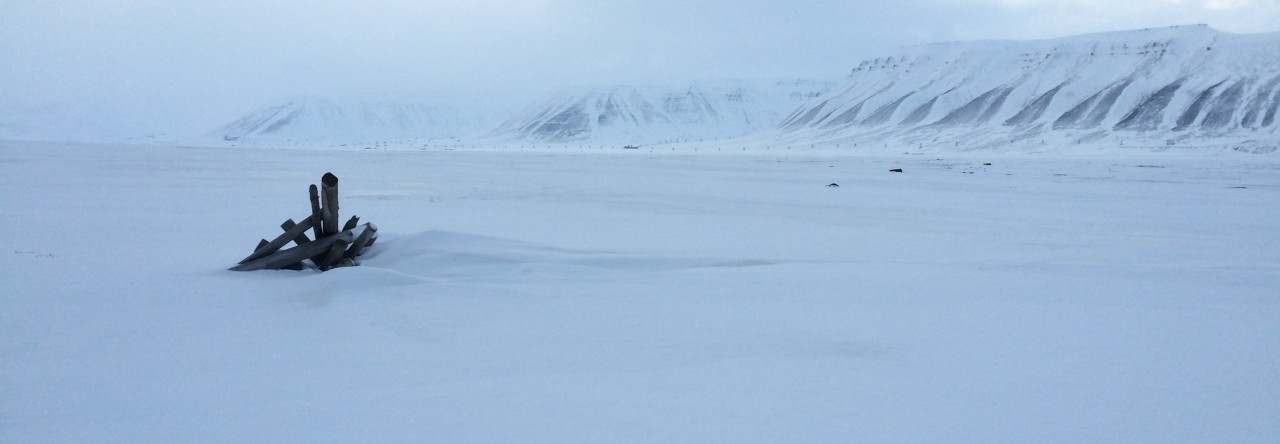


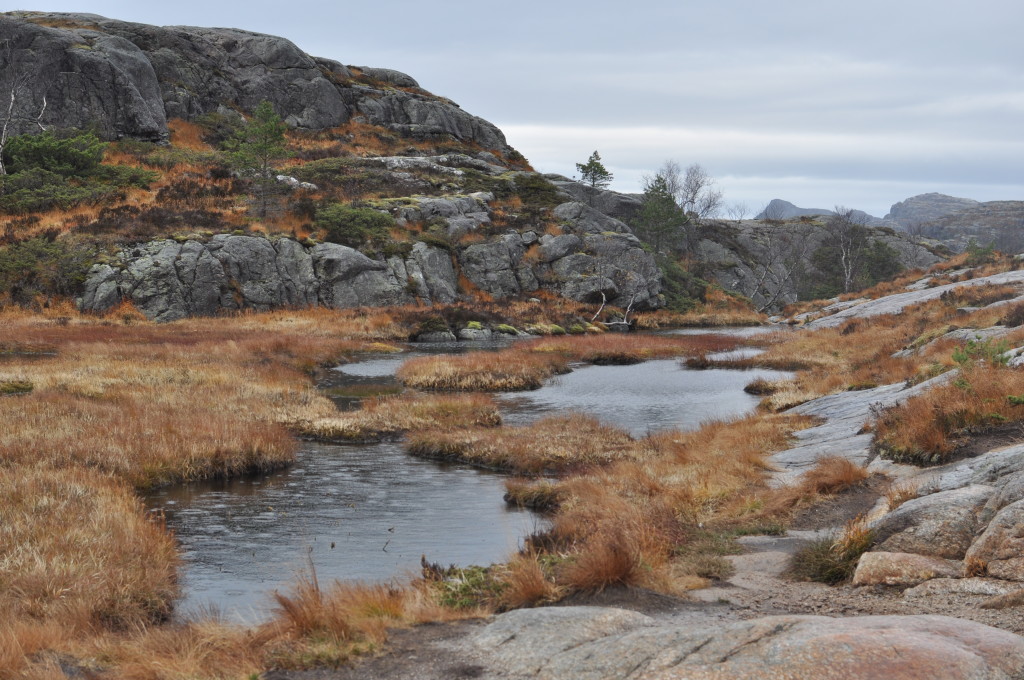
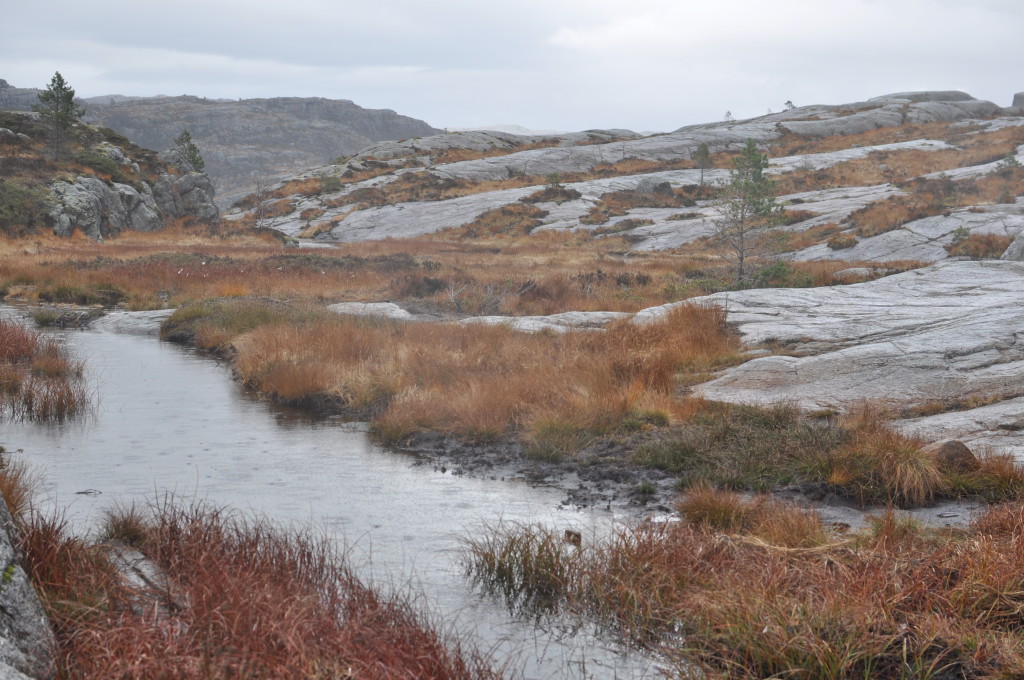
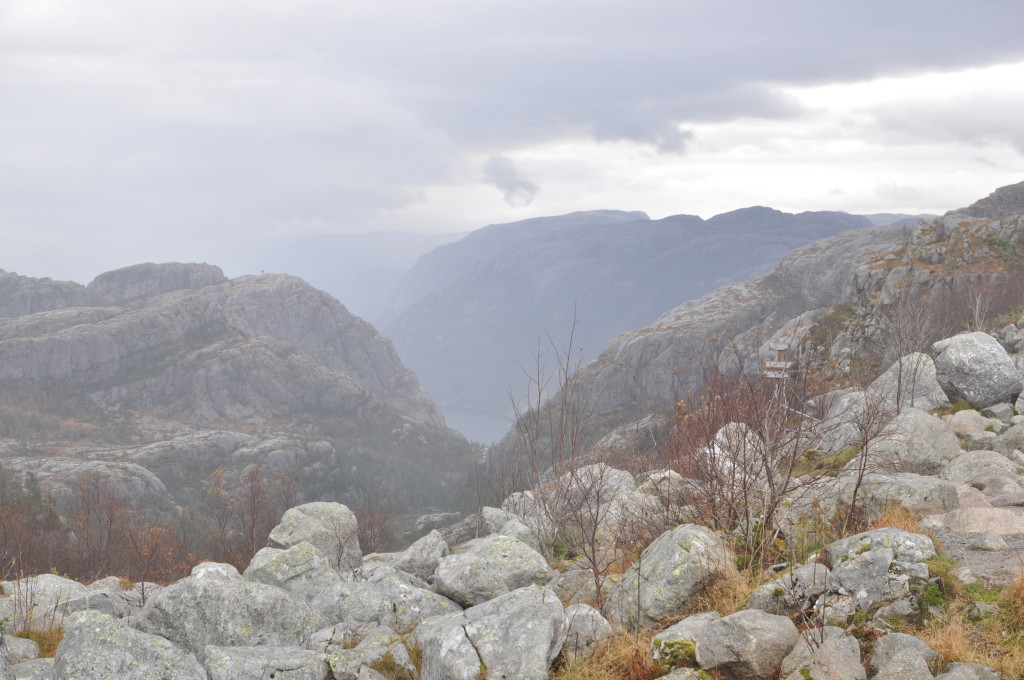
Adina
Your blog is way more erudite than mine.
Andy
But that don’t mean it’s more honest!
Peter Eliason
Andy – I’ve shared that same fascination of the far north with you. Relentlessly wondering why are people living up there. And how? Fun to know I’m not alone in this curiosity.
Cheating a little bit, google earth allows us to “spy” on these places. These islands, these northernmost reaches. And catch a glimpse of what life must be like “up there.”
But…now you know!
Heather
Your blog is lovely! Hope that you are having a wonderful time “Roving!”
Andy
Thanks, Heather! It is quite the opportunity. “Dream job for a year,” I keep telling people. Having an absolutely wonderful time. Meanwhile, I noticed your email address has changed . . . new job?! I imagine congratulations are in order!